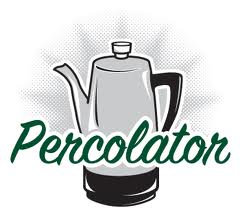Coffee, Perfected
I drink coffee every day, several times. Sometimes, more than several. Sometimes, so much that I wind up at an urgent care facility in the Virginian mountains due to my heart freaking out due to out of control caffeination futzing up the electronic signals used to control the beat. But that’s another story.
I know you drink coffee, too. Danielle doesn’t, and several other friends don’t, and I think they’re wrong. Or at least just incredibly weird. That said, many people drink significant amounts of coffee. It boggles my mind, because most of them are not optimizing their drink. Life is too short for bad coffee.

A friend lent me the book, Uncommon Grounds: The History of Coffee and How It Changed Our World. I think there’s a belief that the way coffee was made years ago was more “proper”. Think home-roasting, fresh-grinding, press pots. The author, Mark Pendergrast, refutes this quite clearly. For example, some commercial coffee roasters put an egg and sugar glaze on their product, “in order to preserve freshness”. Percolating coffee, i.e. boiling it, was another widely accepted technique.
My own coffee journey has been going on for some time. Ten years ago, while working at IBM, a colleague mentioned home roasting, the idea that you buy your coffee unroasted, then you roast it at home. He pointed me towards Sweet Marias, a purveyor of green coffees. The proprietor of Sweet Marias, Tom, has a Coffee Library chock full o’ tips and techniques. For the next several years, I read everything I could get my hands on, and became very obsessed. I became a verifiable coffee snob, only drinking coffee that I made, making bad faces at coffee my mom made me, and packing my grinder and my fresh roasted beans with me whenever I left the house.
I’ve since relented quite a bit. Part of that is me recognizing that my palate is simply not that refined, and I can’t tell the difference between espresso that’s been extracted for the optimum 24 seconds with precisely 14 grams of properly ground coffee, and 27 seconds and 15 grams. It’s the 80/20 rule. I’m aiming to get 80% right.
In my opinion, here’s what matters, in order:
- Good, fresh-roasted, whole-bean coffee. Fresh-roasted means within the last 14 days, ideally the last 7. Coffee stales amazingly quickly. It’s not un-heard of for that $18 pound of Starbucks coffee to have been roasted 3 or more months before you bought it. Home roasting is an option - I really enjoy it - but there are plenty of roasters online that will ship the day they roast.
- A great grinder, burr preferably. Avoid pre-ground coffee. Coffee aromas start to measurably dissipate after 7 minutes. If you’re going to spend money on coffee equipment, make it a grinder. A good grinder will grind your beans to a very even size. The whirley-bird type makes rocks and dust, and what you want are even pebbles.
- Water at the right temperature. To get the most out of your good, fresh-roasted, whole-bean coffee, it needs to spend some quality time with water between 200 and 205 degrees. At this temperature, the flavors are properly extracted into your brew. This is where most electric coffee brewers get it wrong. In order to be safe, the water may only be heated to 160 or 170.
- Quality Time: The coffee and water should be in contact for 3-4 minutes (unless brewing espresso) to ensure that you’ve gotten the best (and avoided the worst) of the coffee.
- Brewing Equipment: Whatever gets the water at the right temperature for the right amount of time is what you want. There’s tons of options. My go-to is a press pot (aka French Press), I also occasionally use a Chemex or pour-over. For something fancy, try a Vacuum Brewer. If you want the electric drip style, I hear the Technivorm is good, but ridiculously expensive.
Here’s my basic, go-to, every day press pot coffee. It may sound labor intensive, but it’s not. It’s easy, and the results are amazing.
- Boil 4 cups of water (I use an electric kettle. Boils fast.)
- Grind 6 heaping coffee scoops of your fresh roasted bean. (I think a coffee scoop is a bit bigger than a tablespoon).
- Throw the coffee grounds in the bottom of the press pot.
- Once the water is done boiling, let it cool for 30ish seconds so that it comes off the boil.
- Pour about 2 inches of water into your press pot and carefully swirl the pot to mix the water and coffee together.
- Pour the rest of the water in, leaving around a half-inch at the top. Set a timer for 4 minutes.
- Gently place the plunger on top of the press pot, the filter should barely rest on the surface of the coffee.
- When the timer goes off, steadily press the plunger through the coffee until it stops.
- Pour and enjoy.